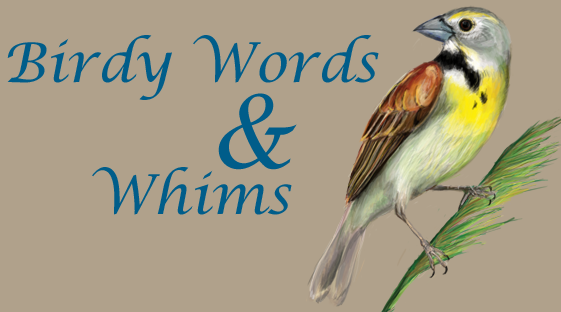 OK, I'm a little behind in updating my blog! But a week ago I had the great opportunity to learn about raptor research techniques at the Linwood Springs Research Station in Stevens Point, Wisconsin.
OK, I'm a little behind in updating my blog! But a week ago I had the great opportunity to learn about raptor research techniques at the Linwood Springs Research Station in Stevens Point, Wisconsin.It was a 3 and a half day class and it covered everything from trapping & banding raptors to ascending tall trees to performing habitat surveys. Above pictured is our group for the September 2009 session (Me & Red-tail, Tim, Dave, Walt & Cooper's Hawk). I was the youngest there and the only girl. At first I wasn't too surprised about that since raptors are kind of macho birds. But our instructor, Gene Jacobs, actually said it wasn't too typical, and usually they get more women and more college-age participants in the classes. Either way, being the only girl definitely didn't mean I had to be protected from the fierce, taloned birds of prey. I got hands-on experience with two Red-tailed Hawks and an American Kestrel. Oh, and this was my absolute first time working with raptors!

My favorite was the Kestrel (an adult female). I love the falcon "helmet" or "side burns," that they have, very cute.
 We almost caught a Merlin as well, a larger bird also in the falcon family. That would have been pretty neat, but the Merlins were not as interested in our traps. In order to trap birds, we used two methods: finding the raptors first and setting a trap or setting the trap first and then waiting for raptors to fly in. The first method used a type of trap called a "bal chatri," which is a cage covered in tiny nooses that get caught on a predator's feet. The cage has the bird's lucky prey item, usually a mouse from a pet store. Really, the mice are hardly ever harmed by the birds, but I wouldn't worry about it since most pet store mice end up being snake food or something of the sort anyway!
We almost caught a Merlin as well, a larger bird also in the falcon family. That would have been pretty neat, but the Merlins were not as interested in our traps. In order to trap birds, we used two methods: finding the raptors first and setting a trap or setting the trap first and then waiting for raptors to fly in. The first method used a type of trap called a "bal chatri," which is a cage covered in tiny nooses that get caught on a predator's feet. The cage has the bird's lucky prey item, usually a mouse from a pet store. Really, the mice are hardly ever harmed by the birds, but I wouldn't worry about it since most pet store mice end up being snake food or something of the sort anyway!
Another type of trap is a bow net, as pictured above. We used a live pigeon as a lure in this case. The pigeon was harnessed so it could not escape, and once again was unscathed by the raptor. We can use pigeons as bait since they are invasive non-native species and are not protected by federal law as most other birds are. Since pigeons are not protected, you could even keep one as a pet if you wanted to!
Anyway, once the hawk goes after the pigeon, it is lured into the area where the bow net is, and then we pulled the trigger to release the spring and the net captures our raptor. It's all a little like the boardgame, mouse trap. There are some great engineering minds behind all this raptor trap business. And it's a little more complicated than using the typical mist nets for songbirds, but it gets the job done.
 Here I am with a juvenile Red-tailed Hawk. Notice that the tail is brown rather than reddish.
Here I am with a juvenile Red-tailed Hawk. Notice that the tail is brown rather than reddish. And here I am with an adult Red-tailed. This guy took a little longer to come to our trap. They get a little smarter with age and more suspicious of prey inside of a funny cage.
And here I am with an adult Red-tailed. This guy took a little longer to come to our trap. They get a little smarter with age and more suspicious of prey inside of a funny cage. In order to calm the raptors and keep them from flapping while we band and take measurements, we would use coffee cans to secure them. Just look at those tail feathers. This hawk had two generations of red feathers, meaning it was at least 3 years old.
In order to calm the raptors and keep them from flapping while we band and take measurements, we would use coffee cans to secure them. Just look at those tail feathers. This hawk had two generations of red feathers, meaning it was at least 3 years old.
Overall we caught four birds, 2 Red-tails, a Kestrel, and Cooper's Hawk. After the banding, weighing and measuring, we let them go! It was definitely a fun time, and working with raptors was an awesome experience. Even though they are powerful birds perfectly designed to tear open flesh with razor-sharp talons and bill, they really are not all that scary. I hope I get a chance to work with raptors again, we'll see!



No comments:
Post a Comment